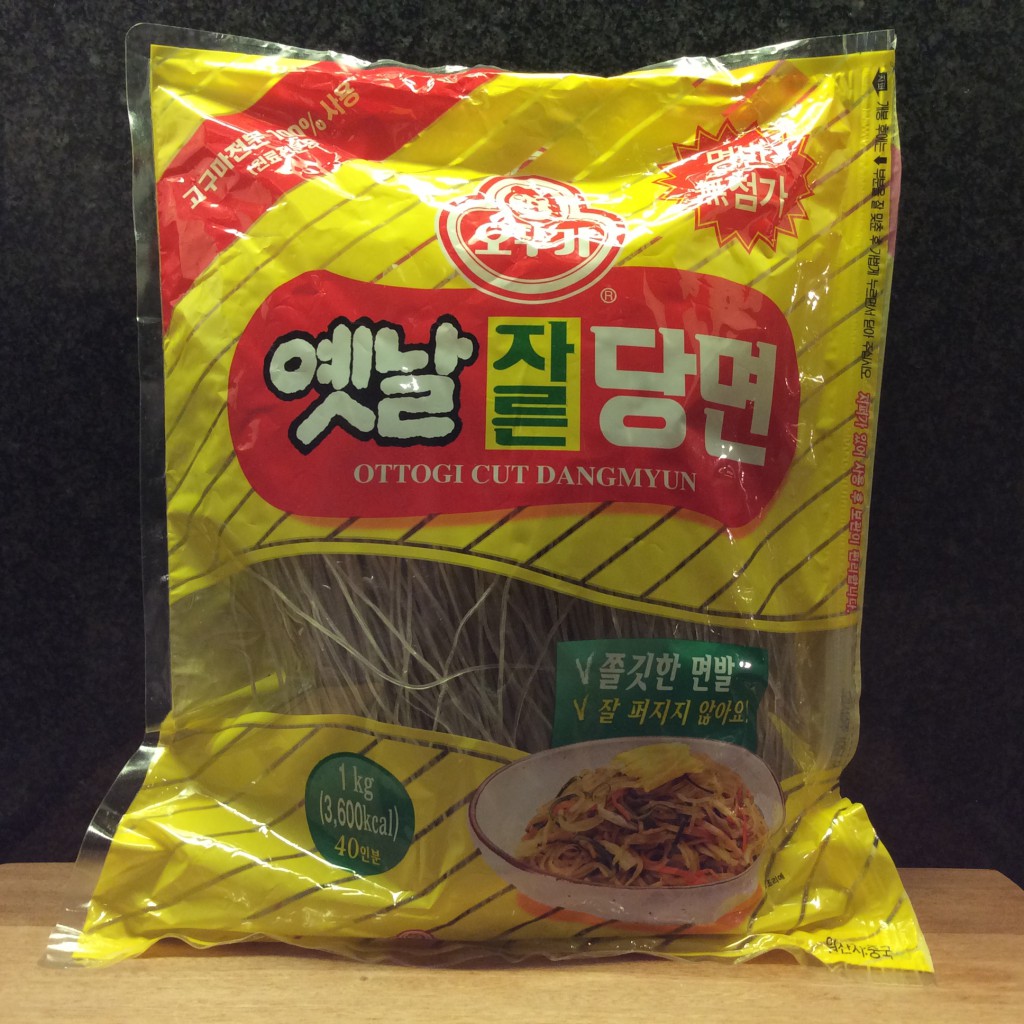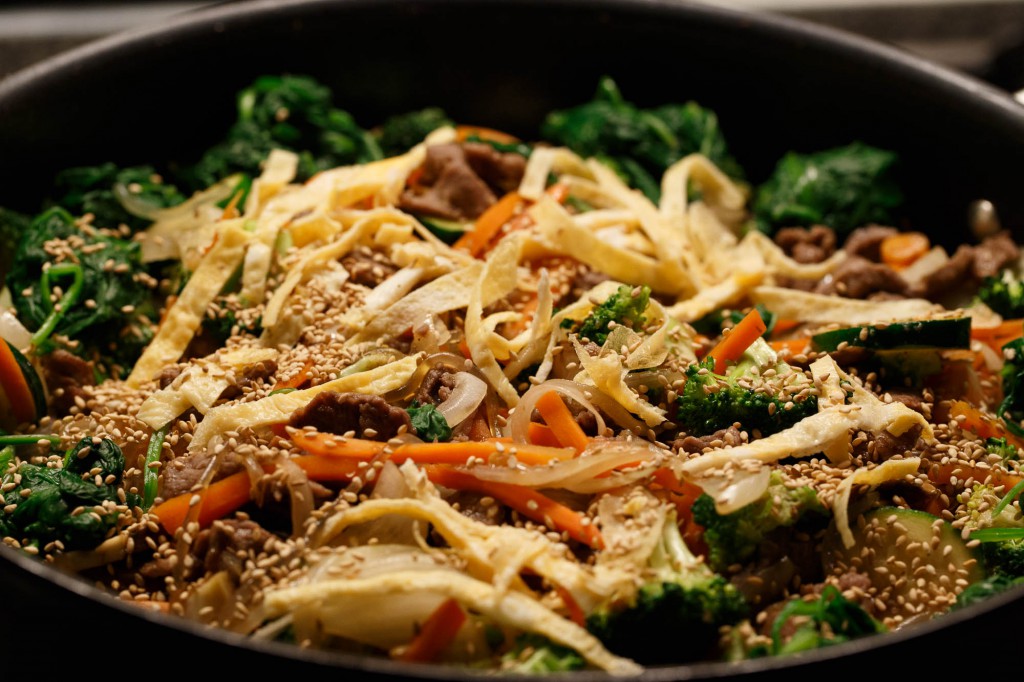Gochugaru Girl has been consulting a treasured book on noodles.
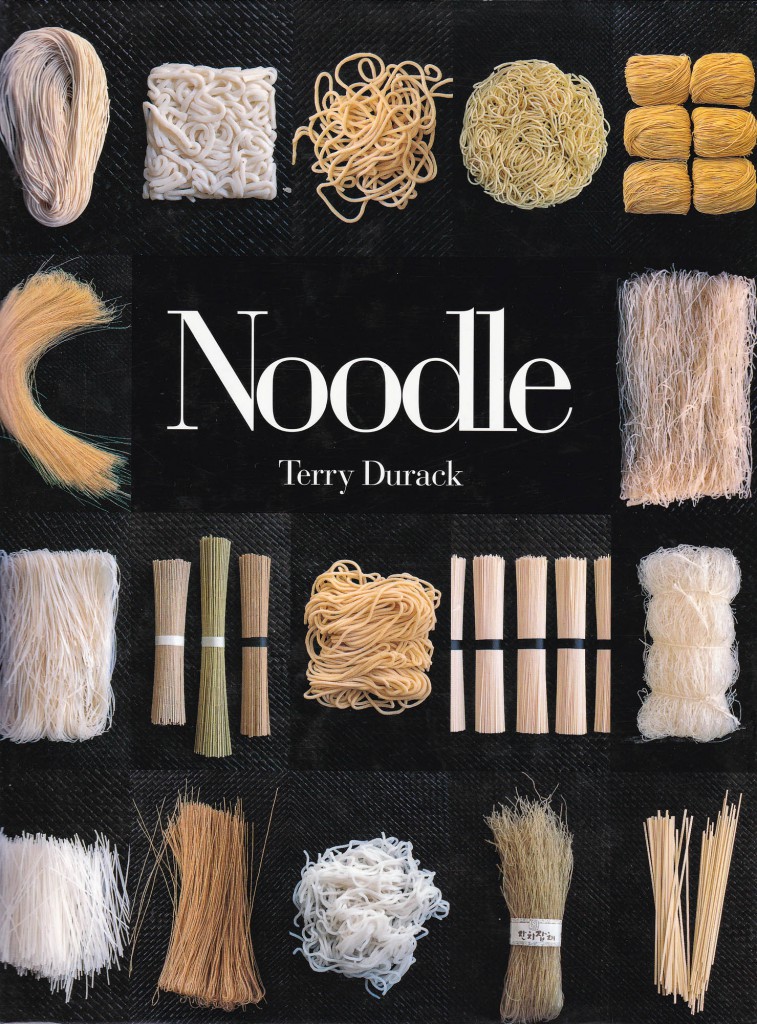 This book* has been sitting on my shelf for 15 years, and re-reading it shows how much London, and I, have changed.
This book* has been sitting on my shelf for 15 years, and re-reading it shows how much London, and I, have changed.
15 years ago I would not have thought I would love Korean food so much. It just wasn’t on my radar of things to eat.
Part of the reason is that Malaysia, under Prime Minister Dr Mahathir, had a Look East policy in the mid-1980s. This was a direct snub to Mrs Thatcher and the UK, who had dared to raise university tuition fees for foreign students. Overnight, the country went wild for all things Japanese, from Hello Kitty to Hello Kyoto, from Sony to Sushi.
Our family’s favourite Japanese restaurant was Chikuyu-tei, which I think no longer exists. I loved it so much (along with The Ship) that I had to bring Mr Gochugaru there when we were first married.
(Mr Gochugaru, country boy that he is, brought me to Dartmoor to look at ponies and for a spot of hill climbing.)
Tonight we are having Japchae, the Korean noodle dish made with dangmyeon (당면). Mr Durack describes these noodles as:
A bigger, tougher, longer, stronger cousin of bean thread vermicelli. The beauty of these otherwise drab-looking noodles lies in their resilient, chewy nature and ability to soak up flavours around them like gastronomic blotting paper. While transparent noodles are found all over Asia, dang myun is in a class of its own, and is very much a Korean phenomenon, highly sought after by the Korean noodle lover.
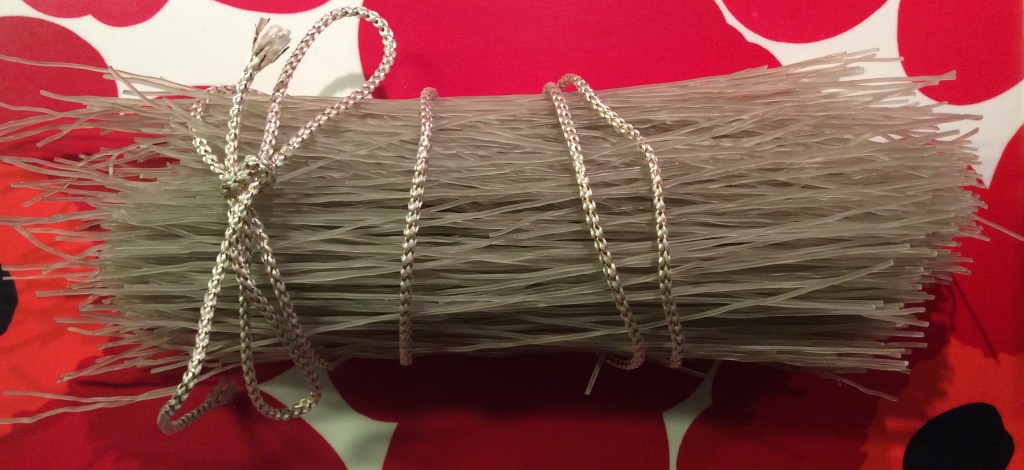
He goes on to explain:
Unfortunately, most dang myun noodles imported from Korea…aren’t actually labelled dang myun on the pack because manufacturers think we wouldn’t know what we were looking for. So look for the words ‘Korean vermicelli’ and check the list of ingredients for ‘sweet potato starch’. Only then can you be sure.
As I said earlier, London has changed. Korean confidence has changed. The dangmyeon noodles I buy has no English explanation: I guess you are expected to now know the difference between Chinese and Korean vermicelli noodles.
Without help in the kitchen, this dish would have been just beef and noodles á la City Hunter. But we need our greens and having my sister** help with preparing the vegetables gets the dish from stove to table in around 30 minutes. I also had a slight short-cut with the beef as this was sliced and marinaded earlier in the day.
It is necessary to have the noodles cooking while the vegetables are being prepared. The vegetables should be cooked as soon as they have been cut to their desired shape. We are talking conveyor belt here.
Japchae is usually eaten with rice but we served this as a main dish. I can eat rice three times a day but recently bought a large bag of the wrong type of rice, and though we still eat it, I couldn’t bring myself to use it tonight. It’s a long story, I will explain later.
This recipe feeds six.
For the Japchae:
300 g sirloin steak, sliced thinly
250 g bulgogi marinade
300 g dangmyeon noodles
2 tablespoons sesame oil
2 tablespoons soya sauce
1 large onion, sliced
4 cloves garlic, minced
Sunflower oil, for frying the meat and vegetables
200 g courgettes, sliced into circles
150 g carrots, peeled and cut into matchsticks
200 g chestnut mushrooms, sliced
250 g broccoli, thick stems removed and broken into small florets
250 g spinach
3 eggs, made into an omelette with a pinch of salt
3 tablespoons toasted sesame seeds
You will also need a large pan for frying everything together. I used a 30 cm-wide frying pan.
How to Make:
Finely slice the steak and place in a bowl. Add the marinade, coating the beef evenly. Leave for half an hour.
Boil some water in a pot and cook the noodles for around 10 minutes. Keep watch after 8 minutes: the noodles are cooked when they are clear.
Drain the noodles, place in a bowl and add in the sesame oil and soya sauce, mixing thoroughly.
Start preparing the vegetables.
Heat a large frying pan and add in a little sunflower oil.
Fry the omelette first. Slice into thin shreds for the garnish.
Fry each vegetable in turn, with a little bit of oil and garlic, until it is al dente, that is to say, it still retains a bit of bite.
Fry the beef last along with all the marinade. When this is cooked through, return all the vegetables and the noodles to the pan.
Make sure the meat, vegetables and noodles are fried together so that the marinade flavours the whole dish.
Garnish the noodles with the omelette and sesame seeds before serving.
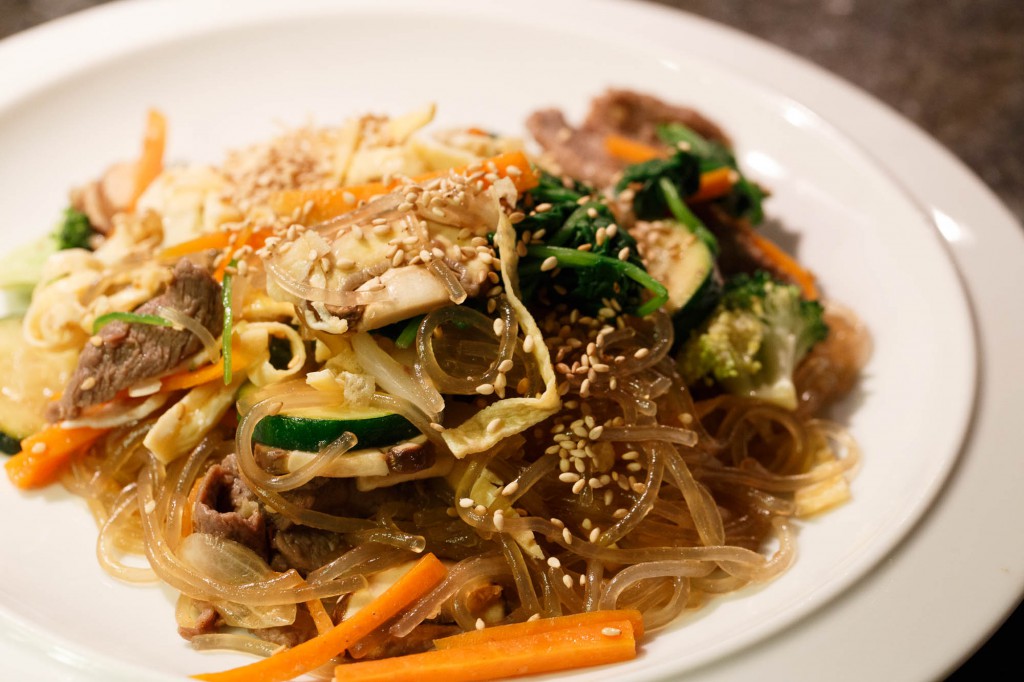
* Noodle by Terry Durack, was first published in 1998. This is now out of print but used copies are available through Amazon. The Kindle Edition has just been released, on 03 October 2014.
** HK sister has been a great extra pair of hands over the past few weeks. I will introduce her in a future post.
